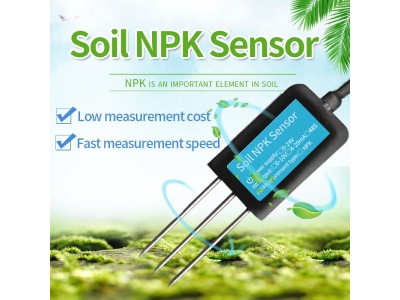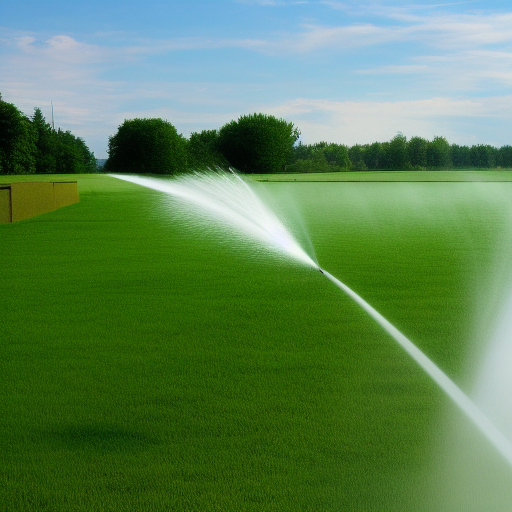
How do soil sensors detect soil?
But how exactly do these soil sensors detect soil and collect data? This article aims to explore the mechanisms behind soil sensor technology and shed light on how they detect soil.

But how exactly do these soil sensors detect soil and collect data? This article aims to explore the mechanisms behind soil sensor technology and shed light on how they detect soil.
Soil sensors play a crucial role in modern agriculture, providing accurate and real-time data on soil conditions. These sensors enable farmers to monitor soil moisture, temperature, and nutrient levels, allowing for precise crop management. But how exactly do these soil sensors detect soil and collect data? This article aims to explore the mechanisms behind soil sensor technology and shed light on how they detect soil.

I. Introduction to Soil Sensors:
Definition:
Soil sensors, also known as soil probes or soil monitoring systems, are devices designed to measure various parameters of the soil. These parameters include soil moisture, temperature, electrical conductivity, pH, and nutrient levels. Soil sensors provide farmers with valuable information that helps optimize irrigation, fertilization, and other aspects of crop management.
Types of Soil Sensors:
There are several types of soil sensors available, each designed to measure specific soil parameters. Some common types include resistive sensors, capacitive sensors, Time Domain Reflectometry (TDR) sensors, and optical sensors. These sensors utilize different mechanisms to detect and measure soil properties.
II. Mechanisms of Soil Sensor Detection:
Resistive Sensors:
Resistive soil sensors measure soil moisture levels based on changes in electrical resistance. The sensor consists of two electrodes placed in the soil, and as the soil moisture content changes, the electrical resistance between the electrodes also changes. By measuring this resistance, the sensor can determine the moisture level in the soil.
Capacitive Sensors:
Capacitive soil sensors use the principle of capacitance to measure soil moisture. These sensors consist of two electrodes separated by a dielectric material. When the sensor is inserted into the soil, the moisture in the soil affects the dielectric constant, which, in turn, affects the capacitance. By measuring the capacitance, the sensor can determine the soil moisture content.Time Domain Reflectometry (TDR) Sensors:
TDR sensors measure soil moisture levels by sending an electromagnetic pulse through the soil and measuring the time it takes for the pulse to return. The moisture content in the soil affects the speed at which the pulse travels, allowing the sensor to calculate the soil moisture level. TDR sensors are highly accurate and can also be used to measure soil temperature.
Optical Sensors:
Optical soil sensors utilize light to measure soil properties such as moisture, nutrient levels, and pH. These sensors emit light into the soil and measure the light that is reflected or absorbed by the soil. By analyzing the characteristics of the reflected or absorbed light, the sensor can determine various soil parameters.
III. Installation and Calibration of Soil Sensors:
Placement:
Proper installation of soil sensors is essential for accurate readings. The sensors need to be placed at an appropriate depth in the soil, considering factors such as the crop type and root zone depth. Placing the sensors too shallow or too deep can lead to inaccurate data.
Calibration:
Soil sensors require calibration to ensure accurate measurements. Calibration involves comparing the sensor readings with known reference values obtained from laboratory analysis or other reliable sources. By calibrating the sensors, farmers can account for variations in sensor performance and obtain more accurate data.
IV. Data Collection and Analysis:
Data Logging:
Soil sensors are often equipped with data logging capabilities, allowing them to record soil measurements at regular intervals. The logged data can then be retrieved and analyzed later. Some advanced soil sensor systems even have wireless connectivity, enabling real-time data transmission to a central database for immediate analysis.
Data Analysis:
The collected soil data is typically analyzed using specialized software or algorithms. This analysis helps farmers understand trends, patterns, and correlations in soil conditions. By combining soil sensor data with other environmental data, such as weather information, farmers can make informed decisions about crop management practices.
V. Benefits and Limitations of Soil Sensors:
Benefits:
Improved crop management: Soil sensors provide precise data on soil conditions, enabling farmers to optimize irrigation, fertilization, and other aspects of crop management.
Water and resource conservation: By monitoring soil moisture levels, farmers can avoid over-irrigation and conserve water resources.
Increased yields and efficiency: Accurate soil data allows farmers to make informed decisions that promote higher yields and increased efficiency.
Limitations:
Cost: Soil sensors can be expensive, particularly for large-scale agricultural operations. However, their cost is often offset by the potential savings and improved productivity they offer.
Maintenance and calibration: Soil sensors require regular maintenance and calibration to ensure accurate readings. This can be time-consuming and may require technical expertise.
Variability: Soil properties can vary significantly within a field, and a limited number of sensors may not capture this variability comprehensively.
VI. Future Developments:
Integration with Precision Agriculture:
Soil sensors are increasingly being integrated with other precision agriculture technologies, such as drones, GPS mapping, and remote sensing. This integration allows for more comprehensive and precise monitoring of soil conditions, leading to further improvements in crop management.
Internet of Things (IoT) Connectivity:
Advancements in IoT connectivity enable soil sensors to transmit data wirelessly and in real-time. This connectivity allows farmers to access soil data remotely, facilitating timely decision-making and enabling proactive crop management.
Conclusion:
Soil sensors are valuable tools in modern agriculture, providing accurate and real-time data on soil moisture, temperature, and nutrient levels. By utilizing various detection mechanisms, such as resistive, capacitive, TDR, and optical methods, these sensors enable farmers to make informed decisions about crop management practices. As technology continues to advance, soil sensors will play an increasingly vital role in optimizing agricultural productivity, conserving resources, and promoting sustainable farming practices.